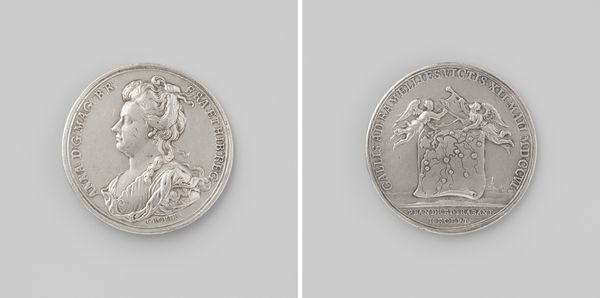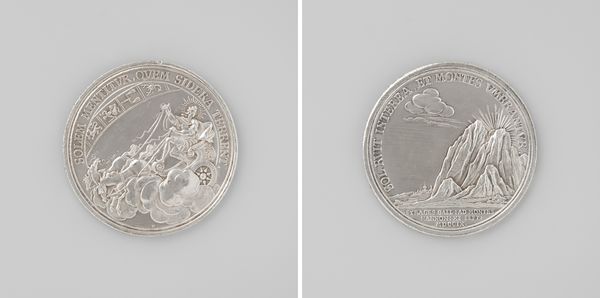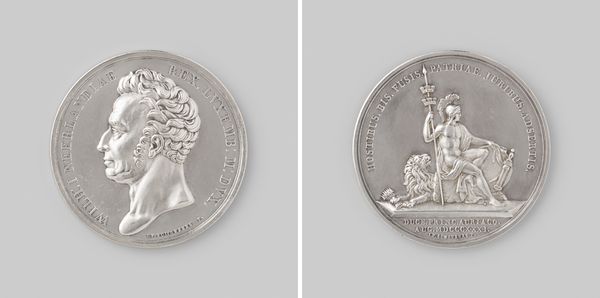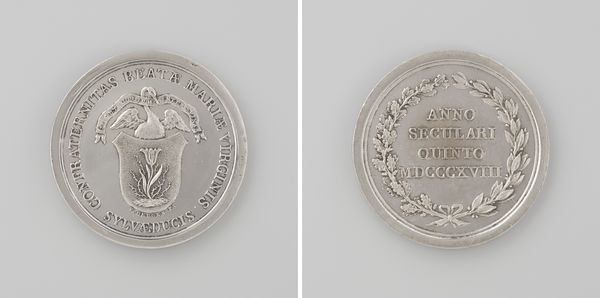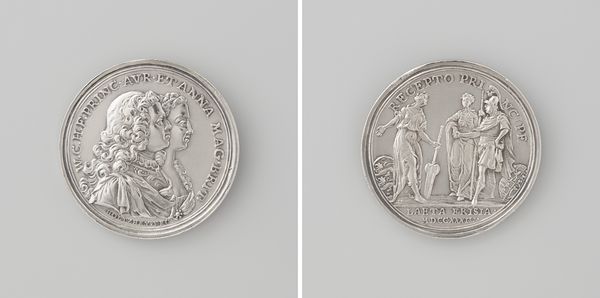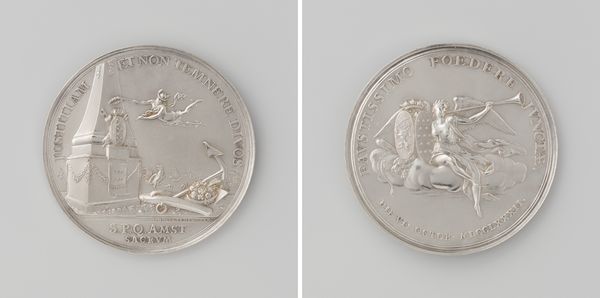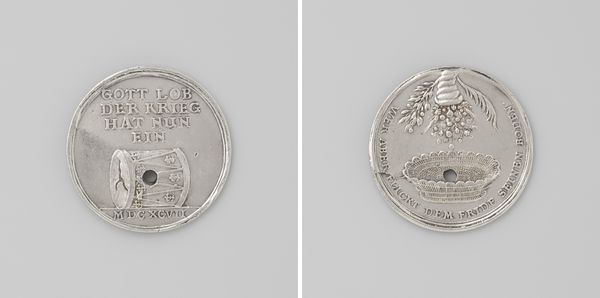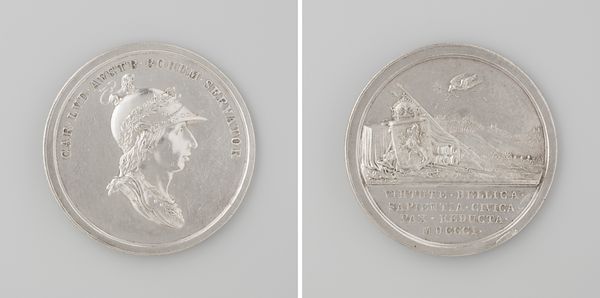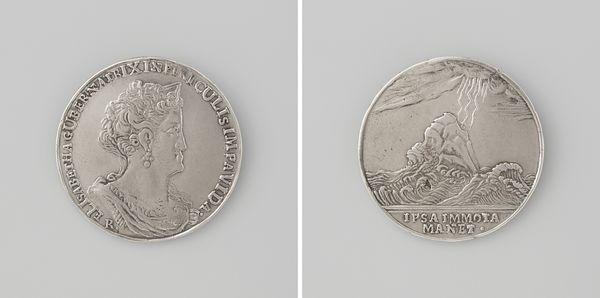
#
masculine design
#
natural stone pattern
#
decorative element
#
3d printed part
#
old engraving style
#
culinary art
#
historical fashion
#
stoneware
#
ceramic
#
limited decorative element
Dimensions: diameter 3.5 cm, weight 14.45 gr
Copyright: Rijks Museum: Open Domain
Editor: This is a commemorative medallion, "Terechtstelling van Marie Antoinette," made in 1793. The artist is Johann Jakob Gottfried Stierle. It’s fascinating—it depicts the execution but feels so… restrained, almost neoclassical in its depiction of grief. What symbolic layers do you see in this piece? Curator: It's an artifact charged with cultural memory. Notice the allegorical figure weeping over the urn—grief personified. What do you make of her stance relative to the discarded crown and scepter at the base? Editor: The symbols of monarchy are literally cast aside. The figure seems almost burdened, but also detached from them, as if acknowledging the past is over. Curator: Exactly. It echoes a wider sentiment of revolutionary iconoclasm—smashing symbols to destroy history, as means of re-framing political futures. But notice also the inscribed text encircling the scene. Do you find it mournful or accusatory? Editor: Hmm, mournful, I think. The lines of text on both sides read like elegies. There's no clear call to arms or political justification present here. It does evoke an ending. Curator: Indeed. The imagery almost romanticizes Marie Antoinette's death even as it commemorates a moment of revolutionary "justice." Think about how potent this medallion would be as a symbol. It invites complex, even conflicting, emotions surrounding power, loss, and the drama of the Revolution itself. What does that make you think? Editor: It is strange, like a sympathetic souvenir! I hadn't considered the complexity in its symbols until now. Thank you. Curator: My pleasure! These kinds of symbols carry an emotional weight we still grapple with. They reflect cultural continuity even in moments of rupture.
Comments
No comments
Be the first to comment and join the conversation on the ultimate creative platform.

